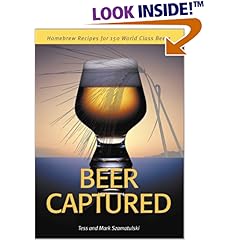
Susun Weed started the Wise Woman Series and Ash Tree Publishing. She teaches classes at the Wise Woman Center in Woodstock, NY. My introduction to Susun Weed began with her book, Wise Woman Herbal for the Childbearing Year.
From an article by Susun S. Weed.
An infusion is a large amount of herb brewed for a long time. Typically, one ounce by weight (about a cup by volume) of dried herb is placed in a quart jar which is then filled to the top with boiling water, tightly lidded and allowed to steep for 4-10 hours. After straining, a cup or more is consumed, and the remainder chilled to slow spoilage. Drinking 2-4 cups a day is usual. Since the minerals and other phytochemicals in nourishing herbs are made more accessible by drying, dried herbs are considered best for infusions.
I make my infusions at night before I go to bed and they are ready in the morning. I put my herb in my jar and my water in the pot, and the pot on the fire, then brush my teeth (or sweep the floor) until the kettle whistles. I pour the boiling water up to the rim of the jar, screw on a tight lid, turn off the stove and the light, and go to bed. In the morning, I strain the plant material out, squeezing it well, and drink the liquid. I prefer it iced, unless the morning is frosty. I drink the quart of infusion within 36 hours or until it spoils. Then I use it to water my house plants, or pour it over my hair after washing as a final rinse which can be left on.
My favorite herbs for infusion are nettle, oatstraw, red clover, and comfrey leaf, but only one at a time. The tannins in red clover and comfrey make me pucker my lips, so I add a little mint, or bergamot, when I infuse them, just enough to flavor the brew slightly. A little salt in your infusion may make it taste better than honey will.
Roots & barks: Use 1 oz (30 grams) per pint (500 mL) of water for 8 hours minimum.
Leaves: Use 1 oz (30 grams) per quart (liter) of water for 4 hours minimum.
Flowers: Use 1 oz (30 grams) per quart (liter) of water for 2 hours minimum.
Seeds & Berries: Use 1 oz (30 grams) per pint (500 mL) of water for 30 minutes minimum.



